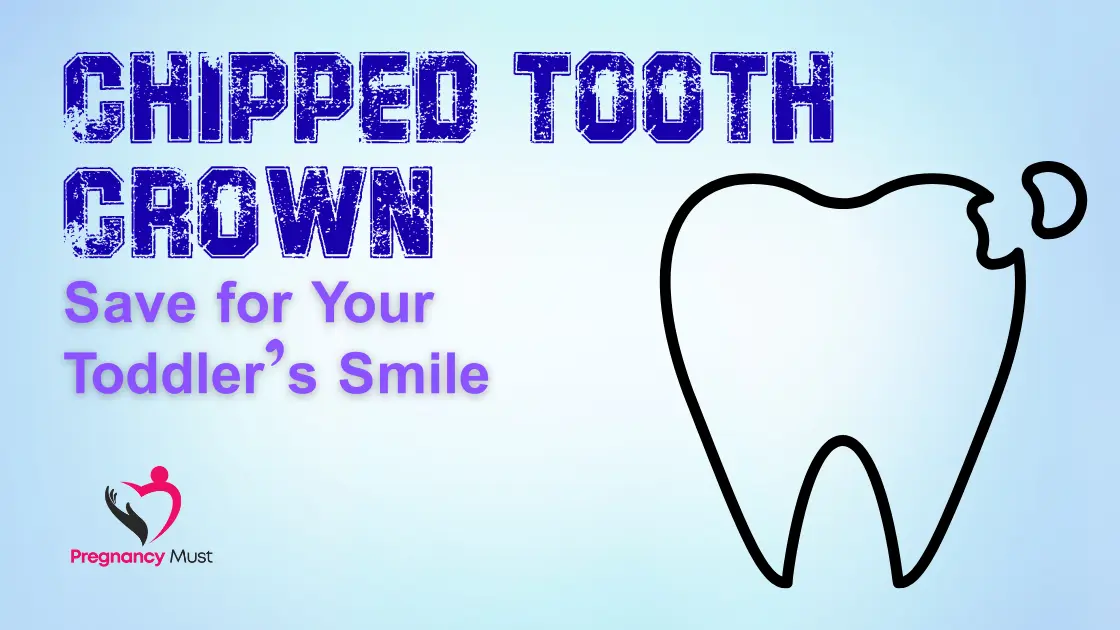A chipped tooth crown is usually the best way to fix a kid’s broken tooth. If your child has experienced a chipped tooth, it’s important for you to know how a crown may be able to restore their smile and protect it from further damage. In this guide, discover everything you need to know about how to fix a chipped tooth, including the best chipped tooth repair options, how crowns work, and why they may be the most suitable option.
Table of Contents
- What is a Chipped Tooth Crown?
- Why Should You Consider a Chipped Tooth Crown for Your Toddler?
- How to Fix a Chipped Tooth in Toddlers: Options for Repair
- What Causes a Toddler’s Tooth to Chip?
- How to Prevent a Chipped Tooth in Your Toddler
- How to Fix a Chipped Tooth Naturally: Home Remedies
- Why is a Chipped Tooth Crown a Long-Term Solution?
- Steps in the Chipped Tooth Crown Procedure
- FAQs About Chipped Tooth Crowns for Toddlers
- Conclusion: Chipped Tooth Crown
What is a Chipped Tooth Crown?
A chipped tooth crown is simply a dental cap that is placed over a chipped tooth. It’s a commonly used remedy to repair broken teeth in young children and toddlers, as it helps protect them and restore functionality. When designed by a professional, a crown works well, is durable, and is “made to look like your child’s natural teeth made from porcelain, and easy to match to the color of the existing teeth.
Why Should You Consider a Chipped Tooth Crown for Your Toddler?
A chipped tooth in a toddler can lead to some pain, sensitivity, and even more dental problems to come. Left untreated, the chipped tooth repair may need more extensive work later on. The Chipped Tooth Crown Solution — And Here’s Why. There are a few reasons why a chipped tooth crown is frequently the best treatment:
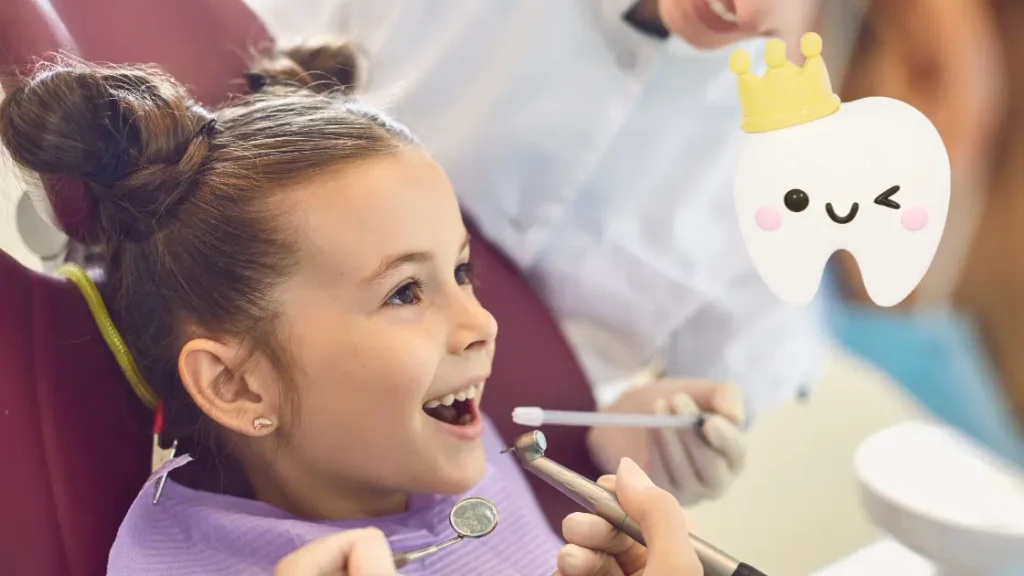
Prevents Further Damage: Protecting the Tooth from More Chipping or Cracking
A crown for a chipped tooth is like a shield that keeps a damaged tooth from breaking. It holds the tooth together and reinforces its structure, resulting in little or no risk of further cracking or breaking. This shield is particularly important when dealing with young toddlers who tend to exacerbate their injuries by chewing on or playing with their bumps and bruises.
Restores Functionality: Enables Comfortable Chewing and Speaking
A chipped tooth can hinder your child’s ability to eat and talk. Your child can use the tooth just like his or her other teeth and can eat and speak normally without pain. This enables them to eat as they want to and to speak as normally as possible without having to avoid particular types of food or feel embarrassed.
Improves Aesthetics: Blends Seamlessly with Natural Teeth
Crowns are made to resemble the color and shape of your child’s teeth, so the treatment will be nearly imperceptible. This will also give your child a smile and increased confidence. Whether it has chipped in the front or back, a crown guarantees that the smile functions as well as it is designed.
How to Fix a Chipped Tooth in Toddlers: Options for Repair
A chipped tooth can be fixed in a number of ways, but the best course of action will usually depend on how bad the damage is. Here are a few substitutes:
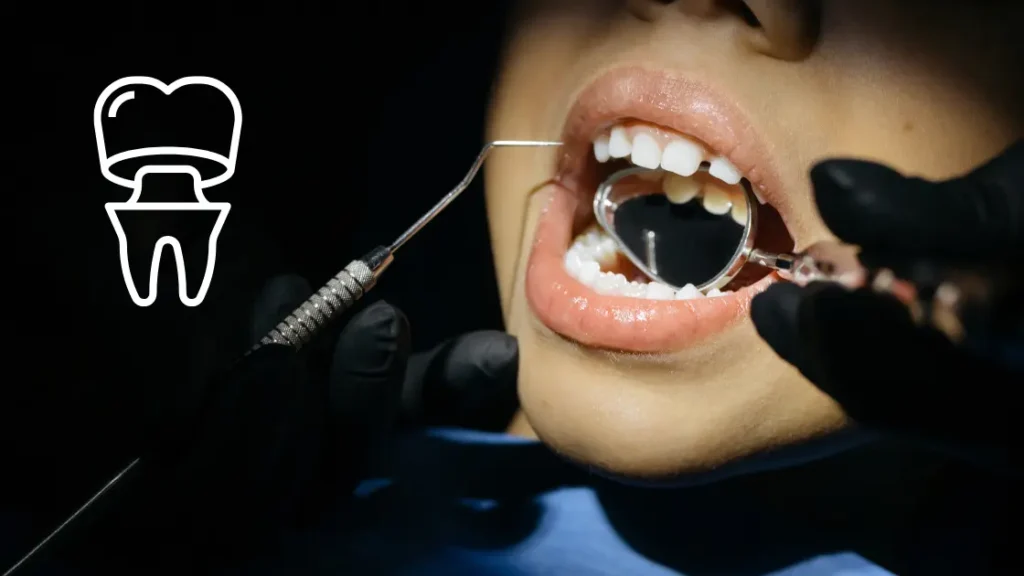
1. Bonding for Minor Chips
For your toddler, small chips in his or her tooth can be repaired with dental bonding. Using a tooth-colored resin, the dentist binds the damage, checking the bite to ensure that the tooth is shaped and matched to its original shape. This is a quick and relatively painless procedure, suitable for small chips. “It bonds the chip and smooths it out.” However, bonding may not hold up to heavy pressure on larger chips or teeth, and it can wear down faster with time.
2. Veneers for Moderate Chips
Dental Veneers are ideal for any moderately chipped tooth. These are thin shells that fit over the front surface of the tooth and return the tooth to its natural shape and appearance. Veneers (made of porcelain or composite resin) are stronger and more durable than bonding and are ideal for moderate damage. They offer a natural-looking solution that maintains the tooth’s structure. Veneers function well in enhancing the cosmetic display of the tooth and helping to provide a durable solution without sacrificing the strength of the tooth.
3. Crowns for Severe Damage
A chipped tooth crown is often the best option for larger chips or teeth that have been badly weakened. ll the rest of the tooth is covered by the crown, it acts as a shield and provides support. Since crowns are made of durable substances – like porcelain – it can last longer than simple fillings despite daily wear and tear. Crowns resists further damage and restore the natural function of chewing and speaking without pain. For more serious harm, they are the best, offering longtime protection and stability.
What Causes a Toddler’s Tooth to Chip?
It is important to know why the tooth chipped to avoid any further damage at a later stage. Here are some common causes:
Accidents or Falls: Toddlers Are Constantly Exploring
Toddlers are very active and inquisitive; thus, they are more likely to have a tragic event or a fall. They may sustain dental injuries from falls or bumps because their balance and coordination are still developing. Since the front teeth are more vulnerable in such situations, a fall on the face can easily result in a chipped tooth. As toddlers learn to walk and play, these kinds of injuries are frequent.
Chewing on Hard Objects: Biting Into Something Hard
Chipped teeth can result from toddlers’ frequent chewing on toys, hard foods, or even random objects they come across. Too much force can cause teeth to chip or crack when you bite into something too hard, like ice or a toy. Since baby teeth are softer and more delicate, they’re especially vulnerable to this type of damage.
Decay: Weakened Teeth Due to Decay
Teeth become softer and thinner due to decay. If you neglect them, the tooth will become weaker and more prone to chipping and breaking. Maintaining a consistent oral hygiene routine is crucial for preventing decay and stabilizing teeth that are weaker because they are more likely to break when chewed or struck.
How to Prevent a Chipped Tooth in Your Toddler
Active toddlers get their teeth chipped. Here are a few tips to prevent such teeth chipping:
Ensure Your Toddler Wears a Mouthguard During Sports Activities
If your toddler is a sports enthusiast, particularly in contact sports or activities with a risk of falling, a mouthguard is a must. A mouthguard is a type of soft, protective cover that fits over your teeth and gums to help prevent your teeth and gums from being injured during a fall or collision. It helps you avoid things like chipped teeth, lacerations inside the mouth, or even worse dental injuries. Making sure your child wears a mouthguard can help prevent dental injury when they are playing sports.
Limit Their Access to Hard Foods or Objects They May Bite Into
Young children are curious and often chew on things, like hard candy or small toys. Although this can be harmless in the best of cases, biting into hard items (your child’s toys, ice, or even hard-cooked food, e.g., rice) can put too much pressure on their teeth and cause them to chip or crack. To circumvent this, you should make sure they do not have access to hard objects and encourage them to bite on sufficiently aged soft objects. This simple safety measure can help protect growing teeth from sustaining damage as your child becomes familiar with the world around them.
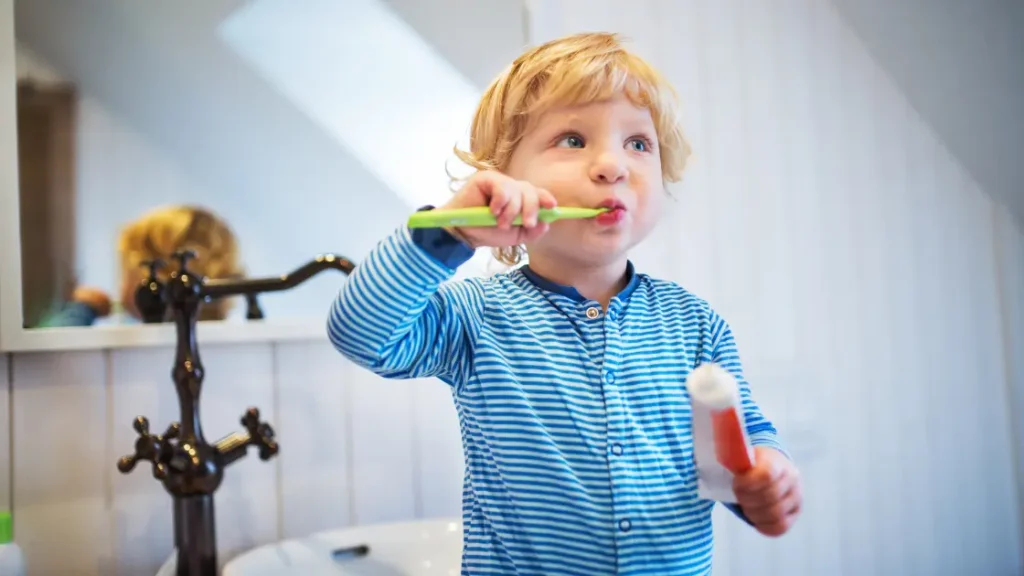
Maintain a Good Oral Hygiene Routine to Prevent Tooth Decay
Maintaining an efficient oral hygiene routine is necessary to keep cavities at bay, which can lead to weakened enamel and contribute to your teeth chipping. Brushing your toddler’s teeth twice a day with fluoride toothpaste and flossing regularly will help prevent cavities. Tooth decay can also be avoided by reducing sugar-sweetened snacks and drinks. You help keep their teeth strong and healthy, minimizing the chances of suffering in pain from damage, by keeping their champers in good condition!
How to Fix a Chipped Tooth Naturally: Home Remedies
A few at-home solutions can help you temporarily manage the situation until you can visit a dentist. if you’re wondering how to fix a cracked tooth naturally:
Saltwater Rinse:
A quick and easy way to relieve tooth chipping pain is to rinse your mouth with salt water. By cleansing the afflicted area, the salt aids in promoting healing and lowering inflammation. It also resists bacteria and debris and prevents infection, and relaxes. Wash the area in warm salt water a few times a day, till the time when you can have professional dental treatment.
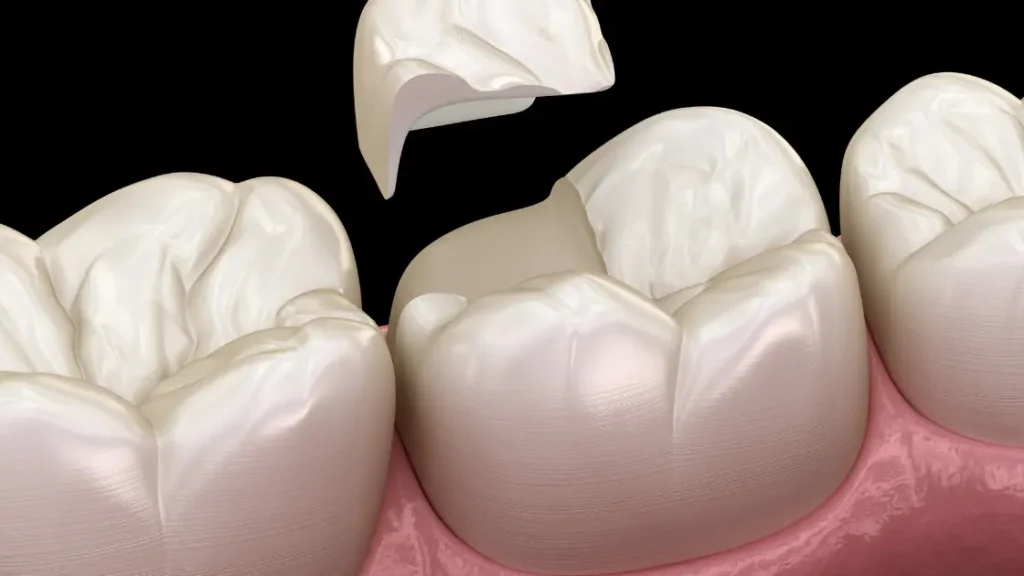
Cold Compress:
The application of a cold compress on the outside of the cheek can help mitigate the pain associated with a chipped tooth. It is also the cold that is numbing the area and decreasing the pain and discomfort. It also reduces swelling by tightening blood vessels, which may help decrease inflammation. I use an ice pack on it for 15-20 minutes at a time and get temporary relief to tide me over until I can get to the dentist.
These are but temporary expedients, however. You need to see a dentist in order to receive the proper treatment; for example, you may need a chipped tooth crown.
Why is a Chipped Tooth Crown a Long-Term Solution?
A chipped tooth crown is frequently recommended because of the longevity that it offers. Unlike other choices that might break or wear down, a crown offers long-lasting protection for your child’s tooth. What’s more, crowns are made-to-order, fitting your child’s mouth for comfort and a natural look.
Steps in the Chipped Tooth Crown Procedure
1. Consultation: Examining the Chipped Tooth and Taking X-rays
It begins with a consultation and the dentist evaluates the chipped tooth. They will look at the tooth with a visual inspection and may take X-rays to get a closer look to see if there is underlying damage that may be more extensive, such as decay or cracks below the surface. This enables the dentist to assess the damage, and determine if a crown is appropriate treatment.
2. Preparation: Cleaning and Shaping the Tooth
When the dentist has decided on a crown, they will clean the damaged part and get rid of any debris or decay. The tooth will be adjusted to accommodate the crown, requiring a portion of the tooth to be filed down. The tooth could be built up with filling material if needed to ensure a good fit with the crown.
3. Crown Placement: Temporary Crown and Final Bonding
If the procedure has to be rescheduled, a temporary crown is placed on top of the tooth to cover it until the permanent crown is created. This interim crown remains in use until the ready crown, which may take two weeks or so, is prepared. After the permanent crown has been shaped, the dentist will remove the temporary crown, clean the tooth, minimize it for the permanent crown, and bond the permanent crown to the tooth to ensure a tight fit that looks and feels natural.
FAQs About Chipped Tooth Crowns for Toddlers
Q1: Is a chipped tooth crown necessary for toddlers?
A: Not every chipped tooth needs a chipped tooth crown, but it is frequently the best solution when there is significant damage or when the integrity of the tooth is at risk and in danger of further harm.
Q2: Can a toddler eat normally with a chipped tooth crown?
A: Yes, once the chipped tooth crown is in place, your toddler can eat normally, though they should avoid foods that are hard and may damage the crown.
Q3: What is the lifespan of tooth crowns that have chipped?
A: Depending on the material and amount of wear, a chipped tooth crown may endure for a number of years.
Q4: Are there alternatives to a chipped tooth crown?
A: Yes, dental bonding or veneers can be options as well, but in cases of deeper damage, a chipped tooth crown is the best way to go to ensure the damage stays repaired.
Conclusion: Chipped Tooth Crown
A chipped tooth crown is an excellent choice to get your toddler a smile that is the way it deserves after losing a chipped tooth. It has aesthetic and structural advantages for protecting and strengthening your child’s teeth. Whether one little chip or a massive crack is present, procedures are typically the same, with crowns taking the prize for best treatment option. And once again: You’ll want to see a pediatric dentist to find the solution that’s the best fit for your child.
Explore more on Pregnancy Must –
Is Baby Grinding Teeth? 6 Causes & How to Stop It
Newborn Care 101: How to Survive the First Two Weeks
